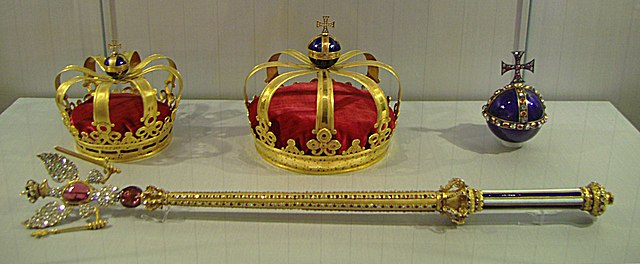Frederick William II of Prussia
Frederick William II was king of Prussia from 1786 until his death in 1797. He was in personal union with the prince-elector of Brandenburg and sovereign prince of the Canton of Neuchâtel. As a defensive reaction to the French Revolution, Frederick William II ended the German Dualism between Prussia and Austria. Domestically, he turned away from the enlightened style of government of his predecessor and introduced a tightened system of censorship and religious control. The king was an important patron of the arts especially in the field of music. As a skilled cellist he enjoyed the dedication of various cello-centric compositions by composers Mozart, Haydn, Boccherini and Beethoven. He was also responsible for some of the most notable architecture in Prussia, including the Brandenburg Gate in Berlin, the Marble Palace and Orangery in the New Garden, Potsdam.
Portrait of Prince Frederick William, c. 1765
Frederick II and Frederick William II
John Moore
Portrait of Frederick William II, by Johann Christoph Frisch, c. 1794
The Kingdom of Prussia constituted the German state of Prussia between 1701 and 1918. It was the driving force behind the unification of Germany in 1866 and was the leading state of the German Empire until its dissolution in 1918. Although it took its name from the region called Prussia, it was based in the Margraviate of Brandenburg. Its capital was Berlin.
The Prussian Crown Jewels, Charlottenburg Palace, Berlin
Prussian territorial acquisitions in the 18th century
Attack of the Prussian infantry at the Battle of Hohenfriedberg in 1745
Prussia (orange) and its territories lost after the War of the Fourth Coalition (other colours)








